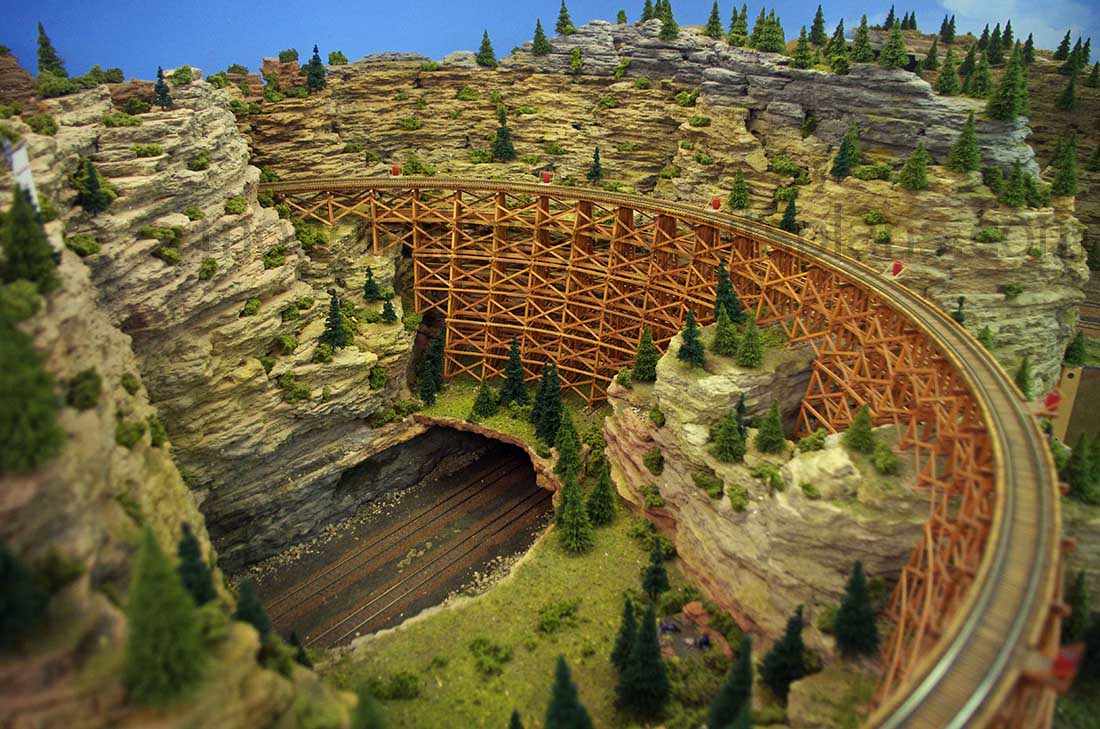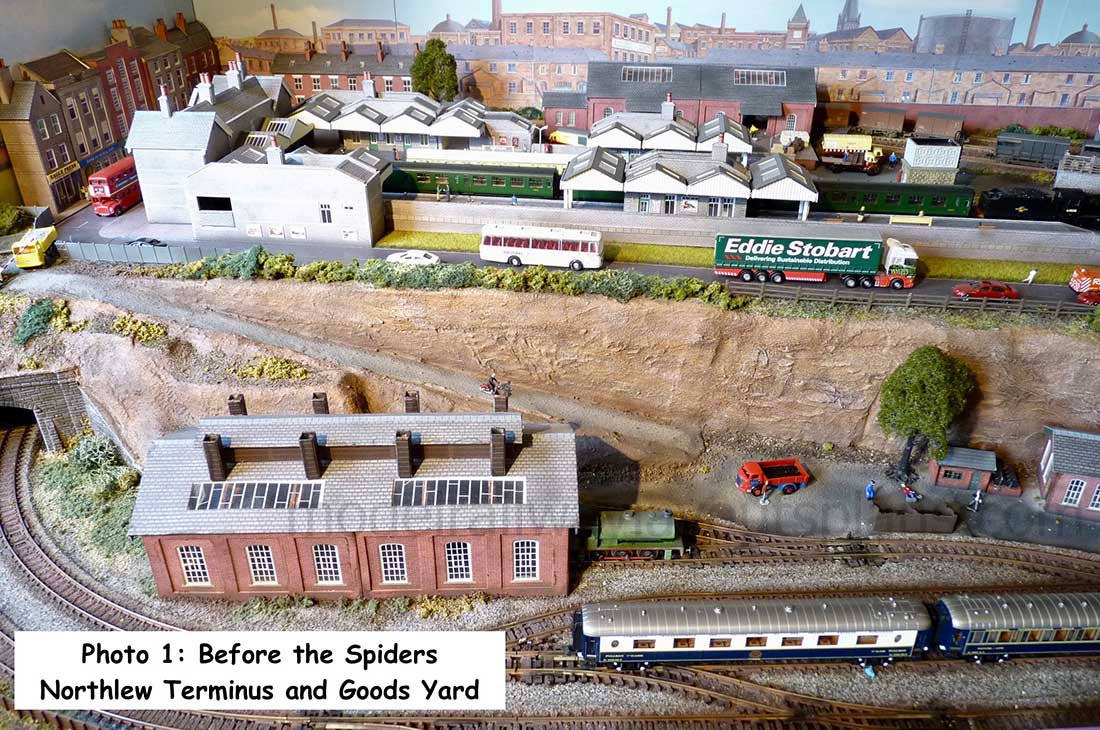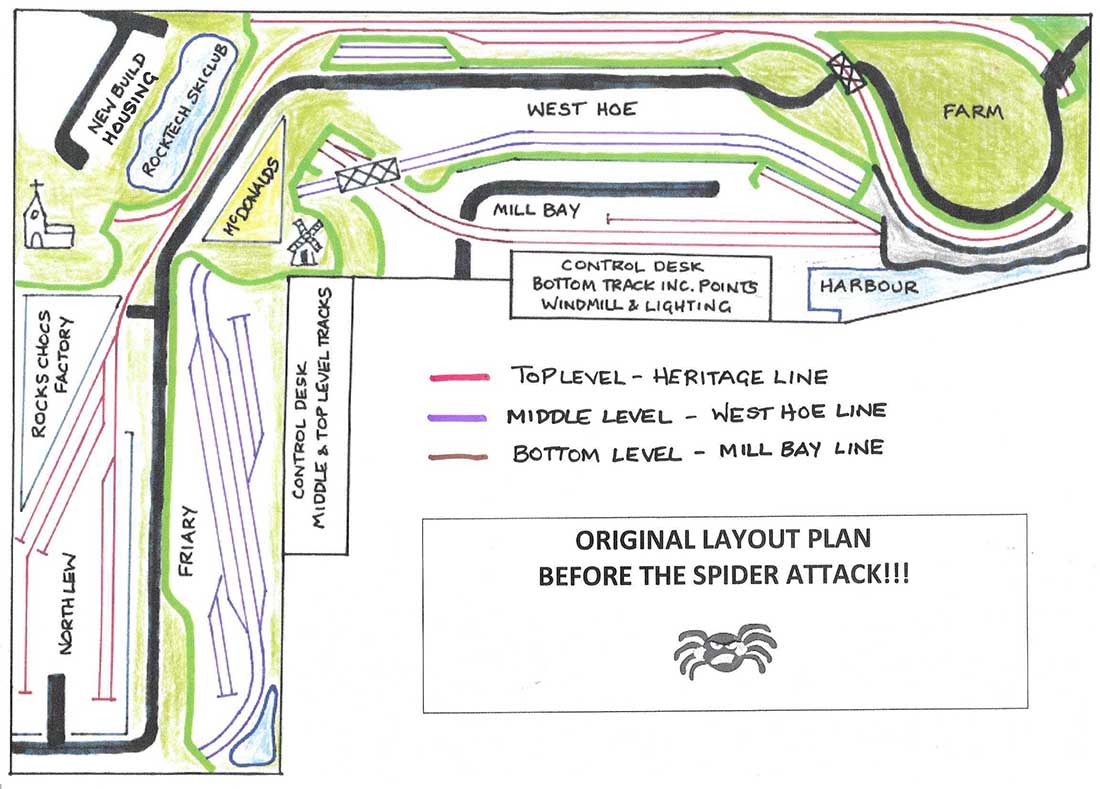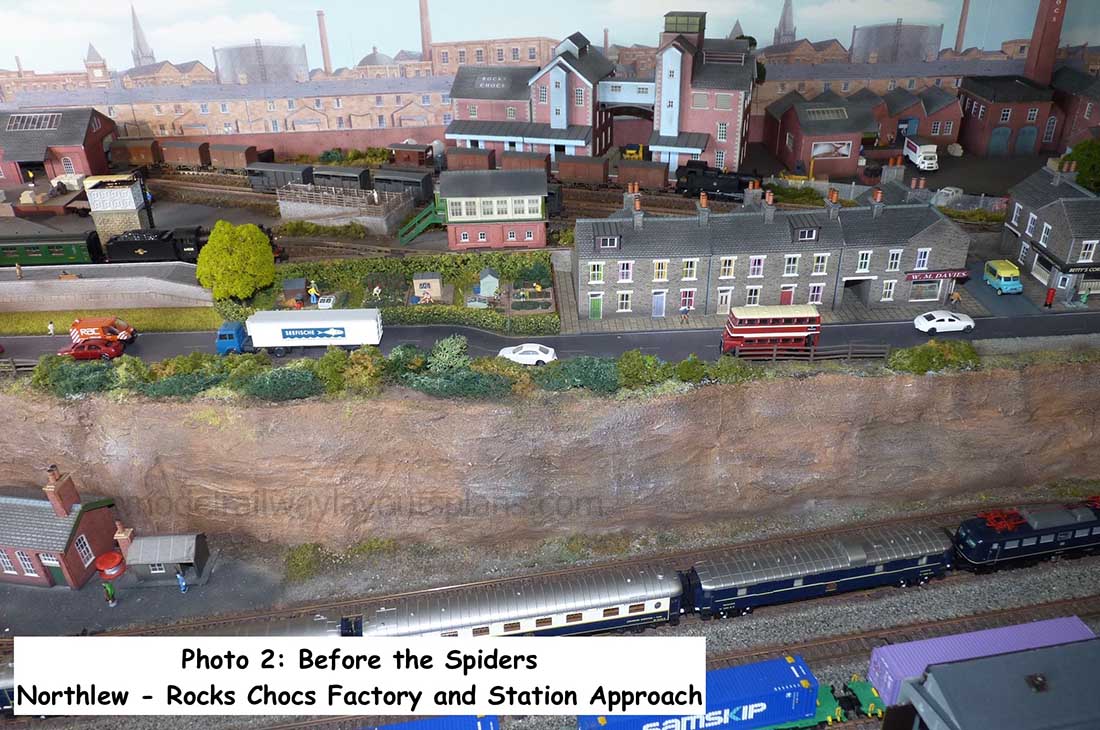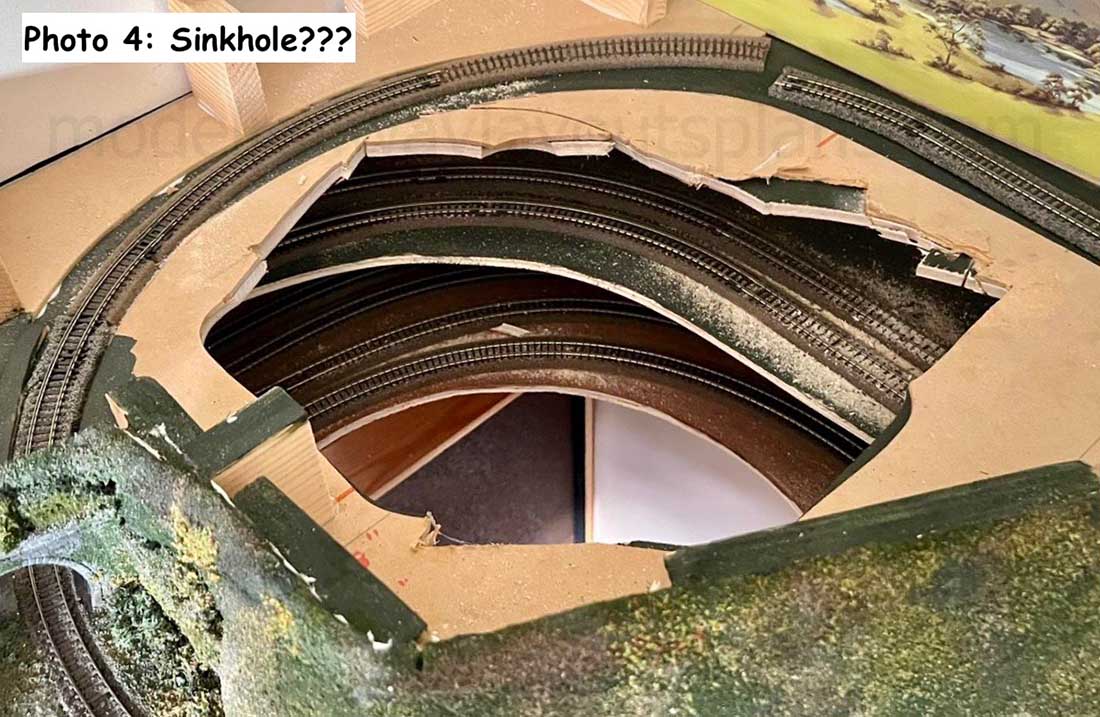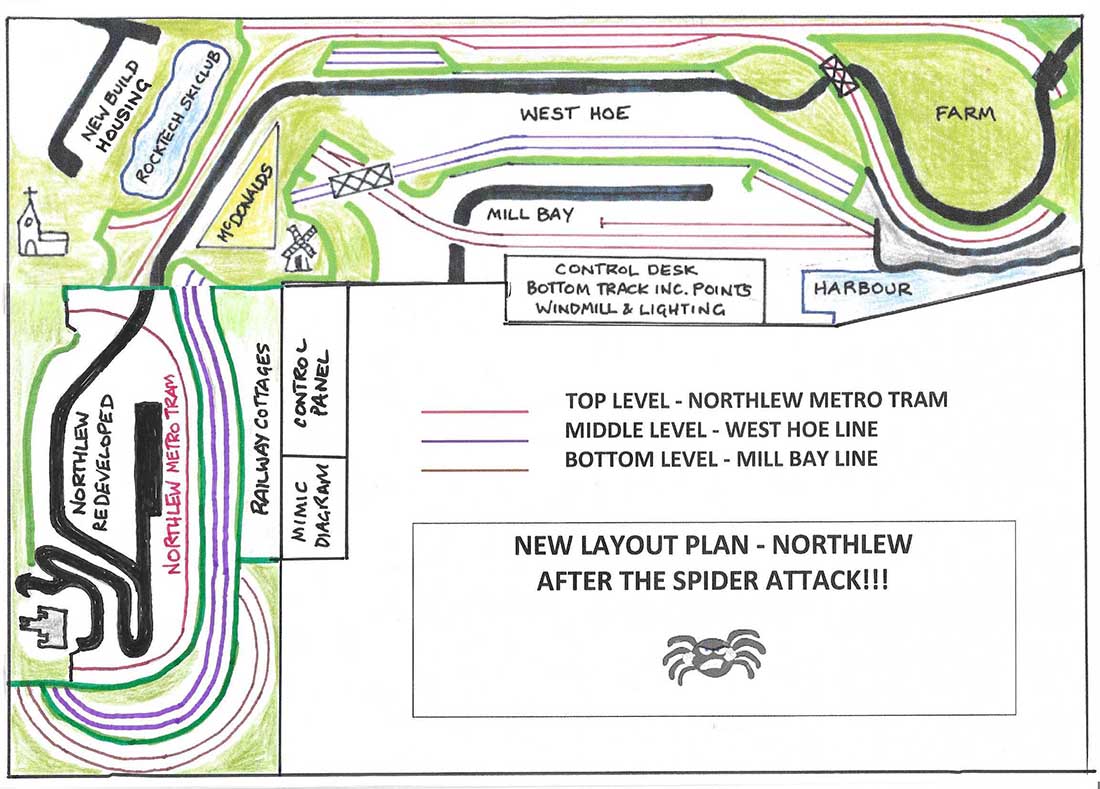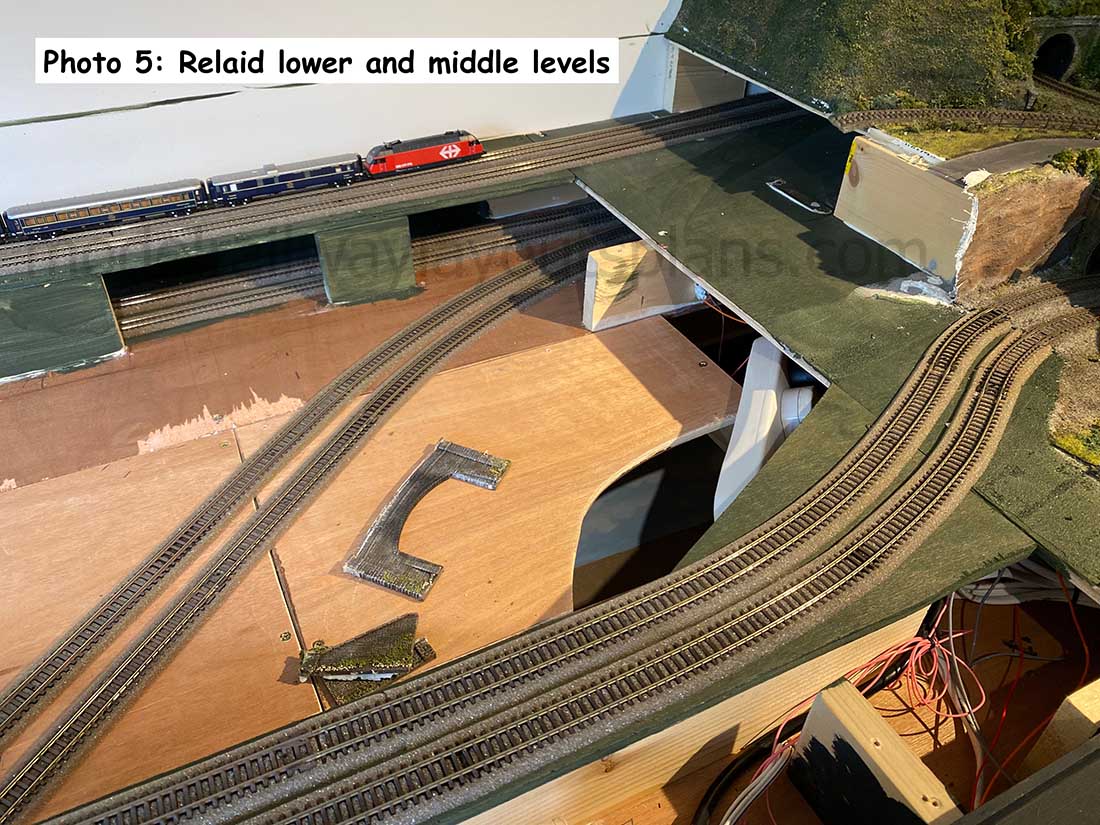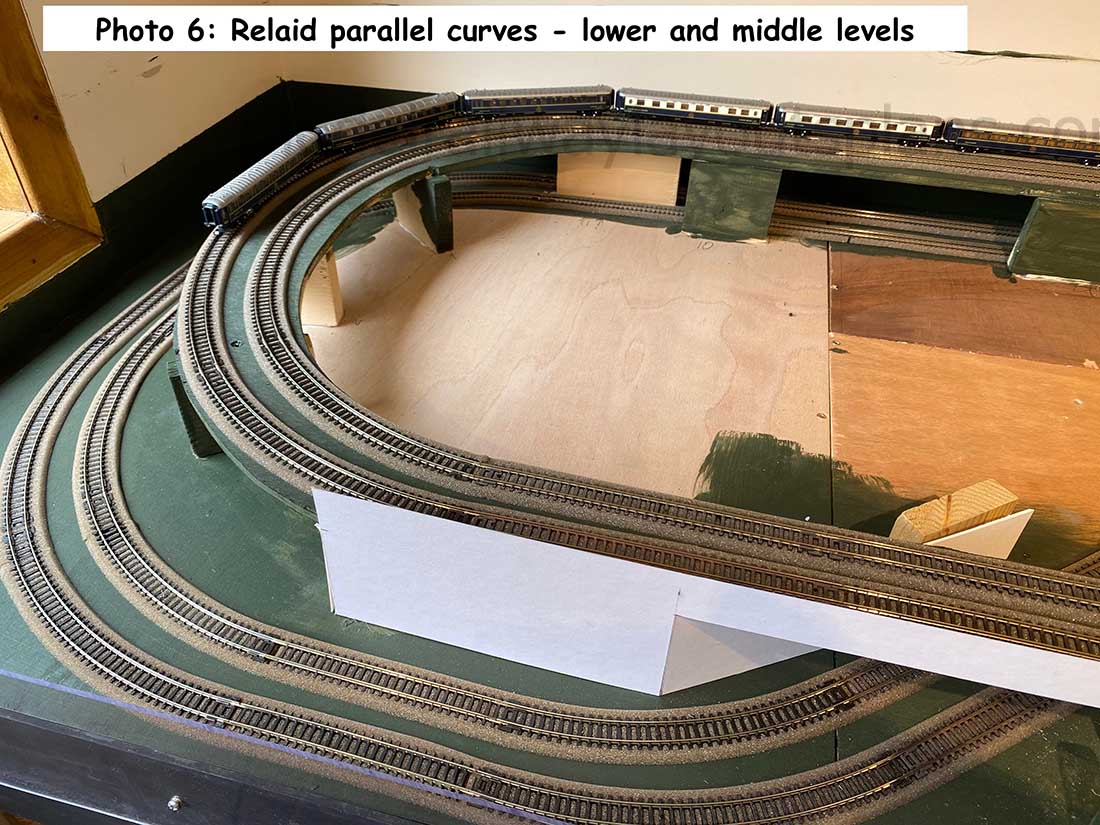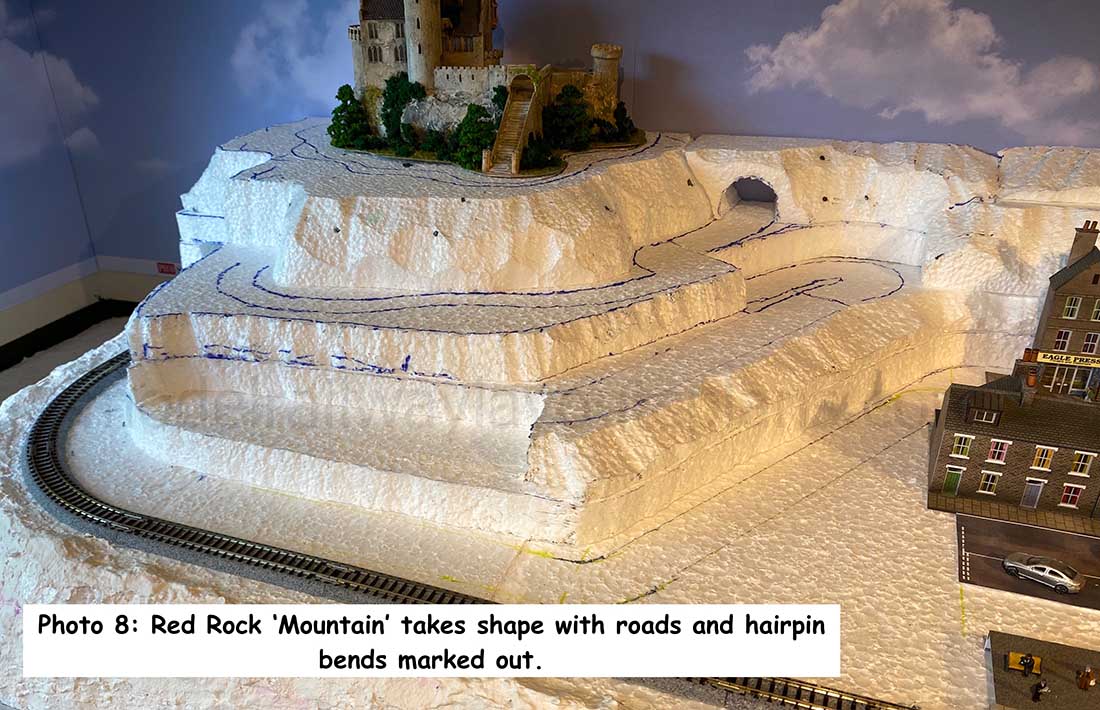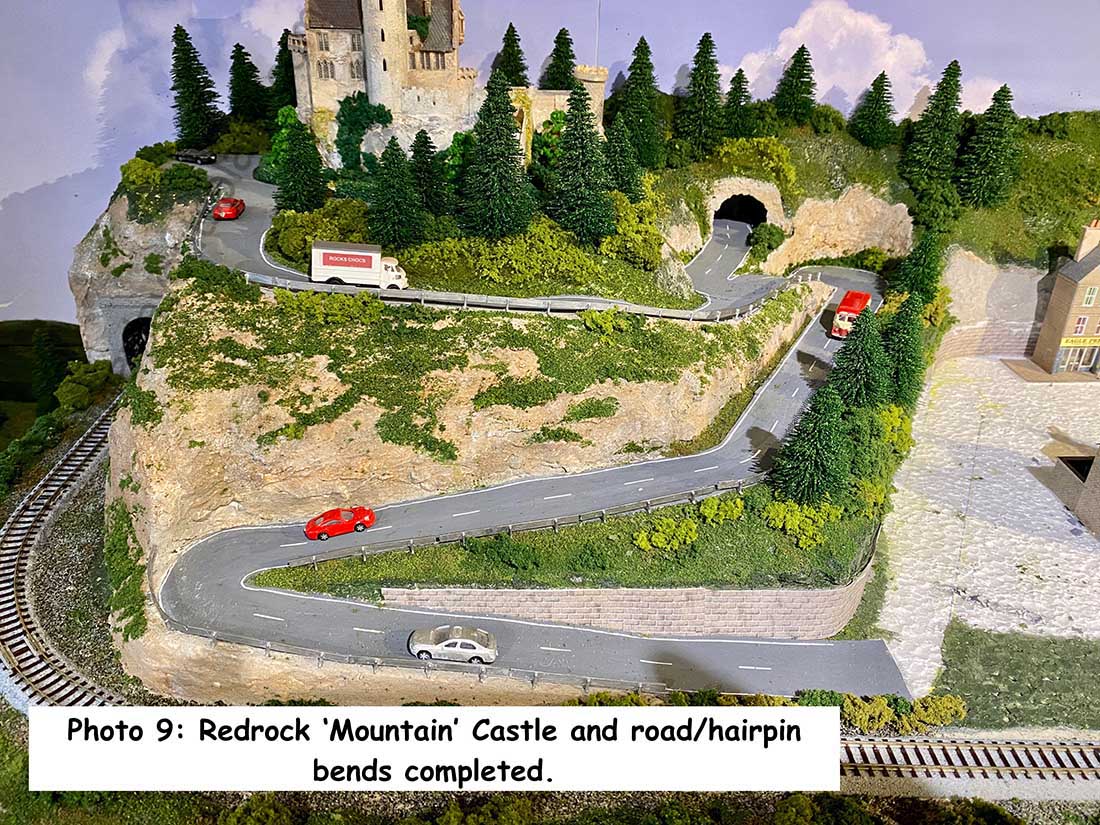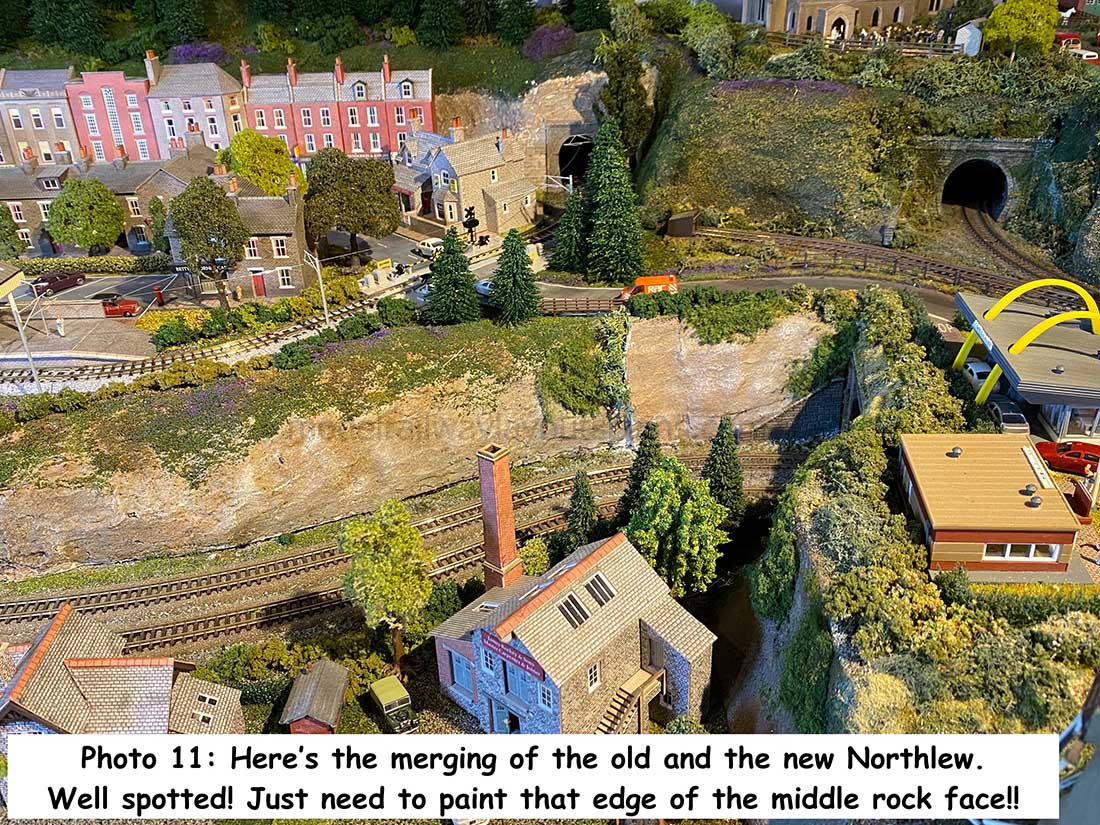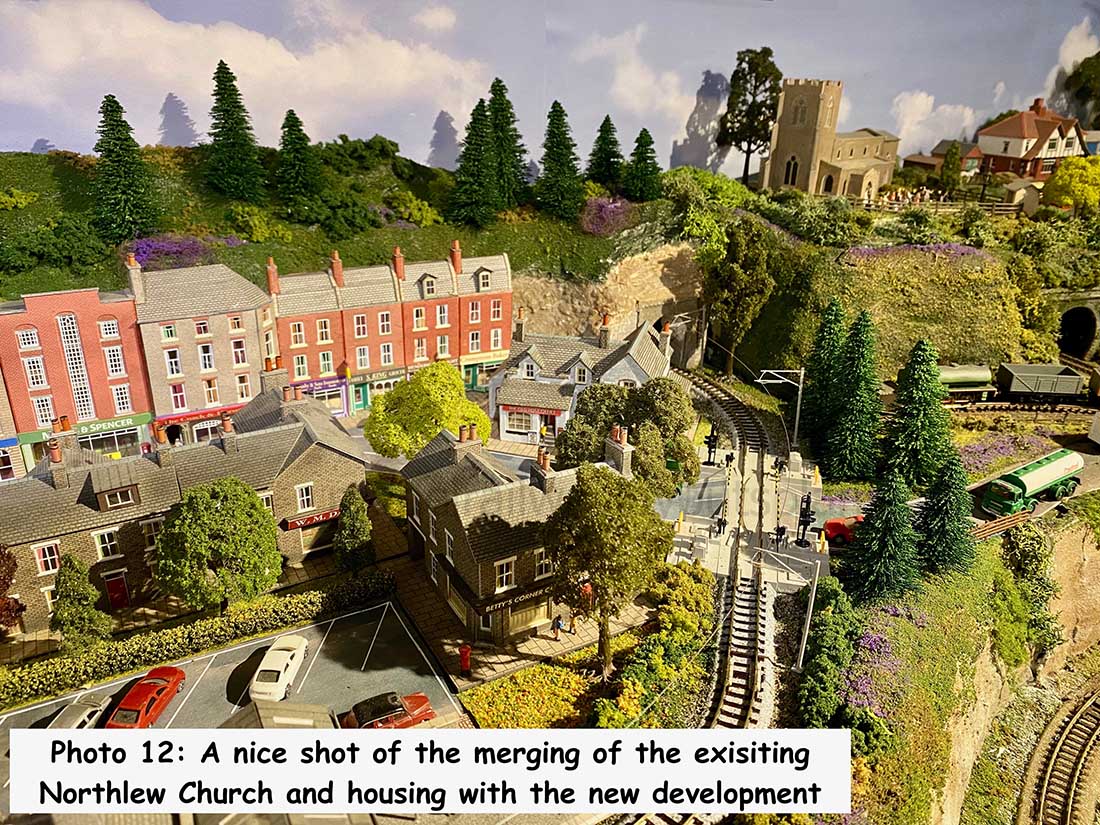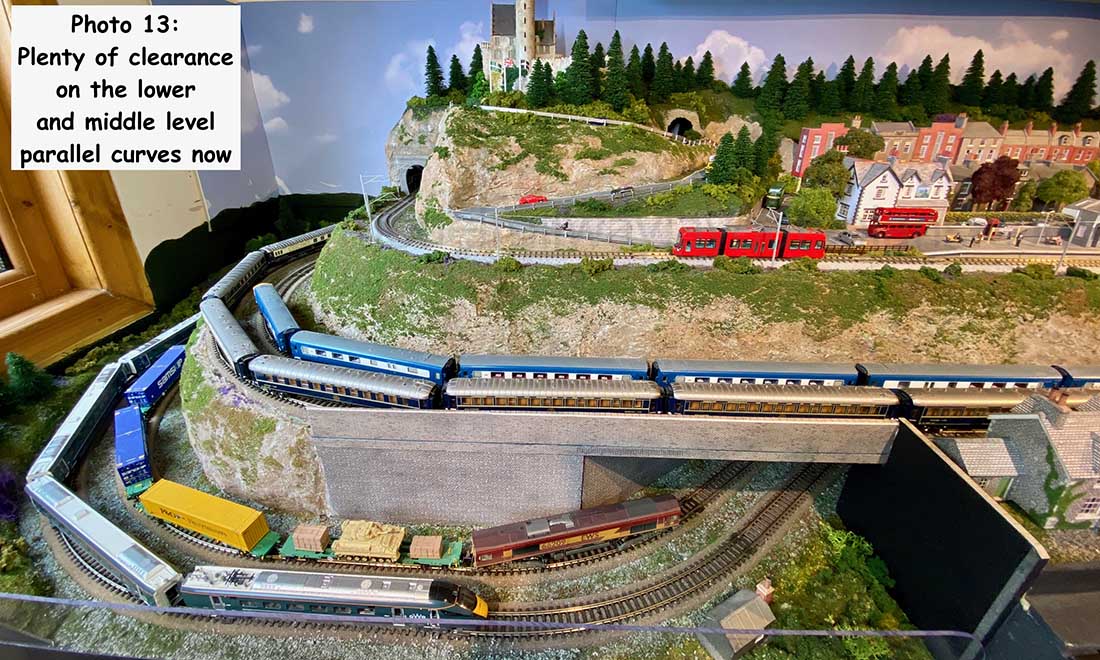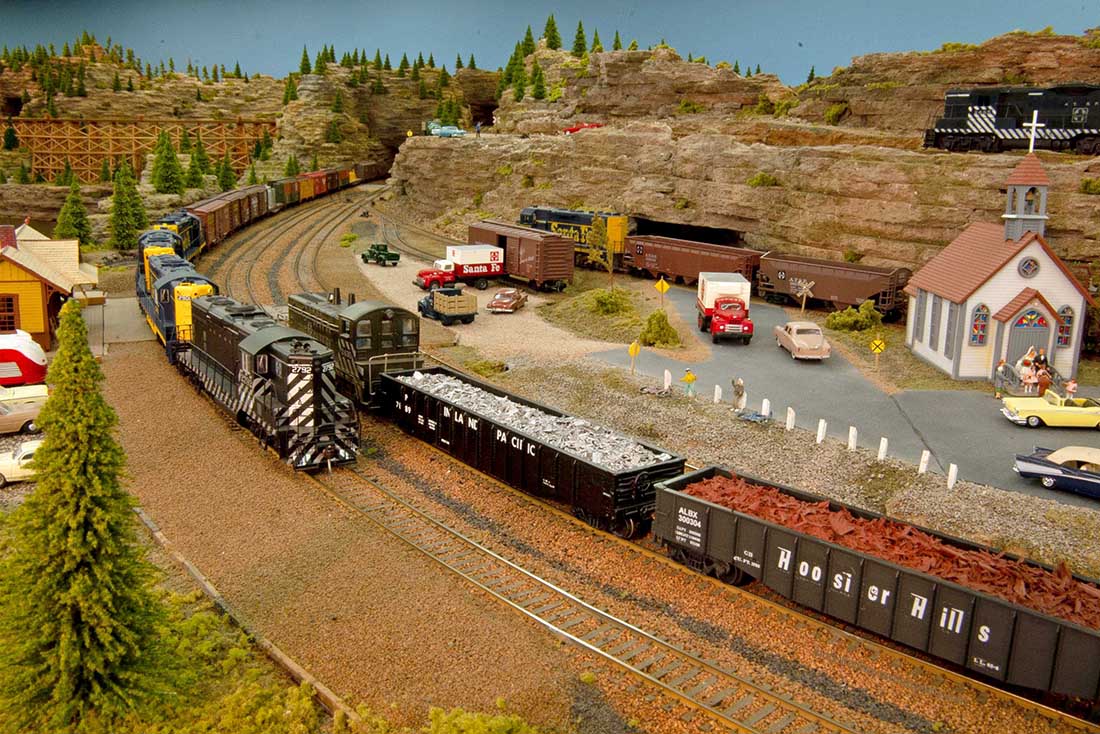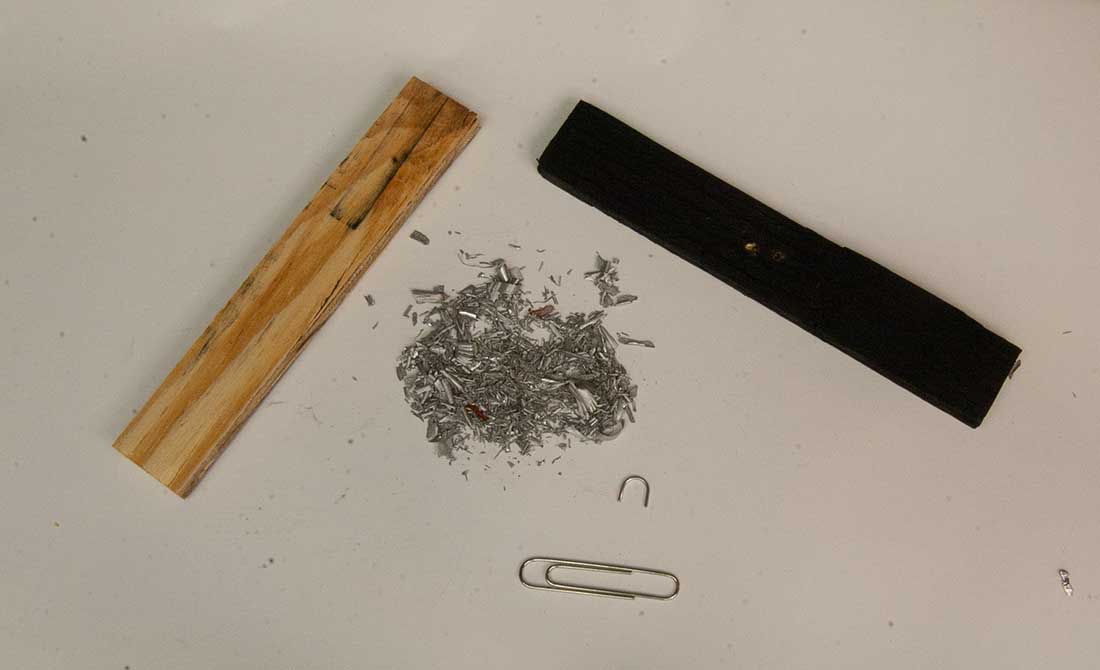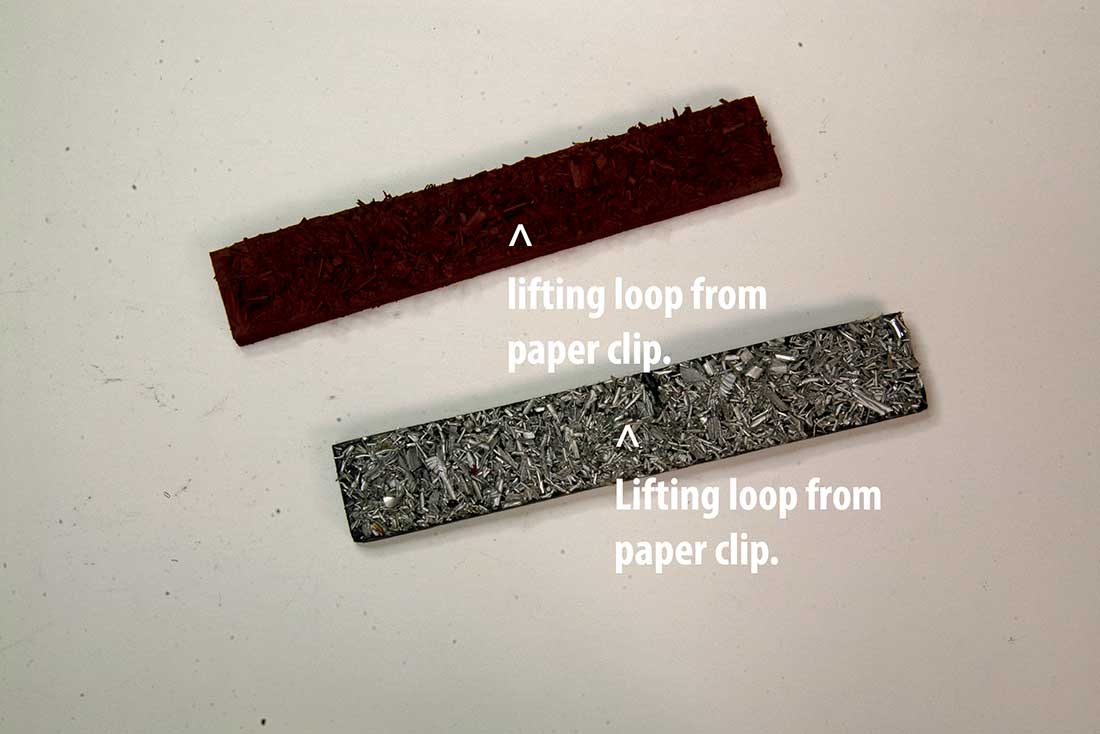Dan’s been back in touch. He talks us through his HO scale trestle template and how it all come together. Stunning stuff:
“For this segment of the layout, I wanted a long trestle. Who doesn’t want one? But not just any old one.
Most trestles have bents marching from short to long and then long to short as needed. I wanted the trestle to look as if the scenery was there first.
Remember we pick and choose the local, time, and place for our scenery. Some compromises need to be made to satisfy the look we might want.
As I began to design the scene, I realized that it would have to be on a curve. This gave me the name of the canyon. The trestle was the arc of a rainbow. As you will see later, the canyon rocks have different subtle colors in the various layers of sedimentary rocks.
I have a copy of All-Nation Line Bridges and Trestles from the 1950’s or so. This was when everyone built bridges of wood even though they might be plate girder bridges. I had previously built, from a Campbelle kit, a short trestle, and a short, curved trestle perhaps 10 years before this project.
You will see the short curved trestle in the next installment. This gave me the confidence to jump into the project.
I made copies from the book of the various segments: bents, stringer placement, and tie placement. I made jigs for the bents and went to work. I knew how long the trestle was to be and then calculated how many bents of the different sizes to make. The bents are 16 feet center to center.
I pre stained all the scale lumber a lighter color than creosote. This was to be a focal point on the layout, and I did not want to have a dark space for them to look at. I used super glue for the assembly.
I learned that the wood soaked up the glue like a sponge. I had to put a dab of glue on the ends to be joined and let it set up. Appling glue again for the final setup. I then went back and drilled very small holes at all the joints and put scale bolt heads in the holes. Yep, a lot of bolts. It looks good though.
The trestle is right in front of the visitors, so the work was worth it.
Once the bents were done, assembly began. I built it upside down. Once two bents were in place, I connected them to make a tower. I took me two weeks of evenings to assemble. Unfortunately, I did not take photos while I assembled the trestle. I was too occupied with the construction.
The canyon rocks were assembled the same way as my other rocks.
The space where Rainbow Canyon will go. Also, you can see part of the trestle which at this point is finished and will be making the scenery fit the trestle as we go. The glue bottle is where the track for the trestle will be exiting a tunnel. The large area near the red and white spray bottle will be an access hole for oopses.
The canyon to be. The green piece of cardboard is a shield to block light from another tunnel to be. The tunnel will take the mainline to the lower level seen as the lowest track in the photo. The middle track leads to the tunnel and the upper track leads to the trestle to com.
Fitting the trestle to the scenery. The trestle at this time is removable so I can paint the rocks.
A little farther along.
HO scale trestle template – it now fits the scenery.
Another view.
The finished trestle. I hand laid the track on all of my bridges including trestles.
Later the trees will be added. You can see the subtle coloration in the different layers of rock.
The track on the trestle actually cross in the tunnel. A little compromise to make it work. The track, going counter clock wise, enters the tunnel and goes to Burnt Lake. The next post I will be doing.
Now for the ugly side of the HO scale trestle template. I make a base and then stack the ceiling tile.
Another view of a base and more stacking.
I mentioned in another photo that there was a pop up hole to come. Here it is. The rock surround the hole and the rocks are finished on BOTH sides. This way if you are tall enough to see over the mountain. it looks finished.
Look to the upper right of the photo and you can see the opening to the pop up hole. The rest of the view is Burnt lake at the top and the track is the spiral up and down to the lower level. I did not make a helix. The grade is 3.5% that matches Santa Fe’s Raton Pass grade.
The tourist train to Burnt Lake makes the obligatory stop to photograph the canyon and the sign.
The info about the trestle.
The RDC brings employees to Burnt Lake…explained in the next installment.
A closeup of the Grant Line bolts. Every joint has a bolt on the HO scale trestle template.
Details around each bent leg. Beside ground foam, the fine gravel/sand is ground up kitty litter.
It appears a hobo camp has been established.
I know there are those who think this is not likely to happen. However, there is a very good reason for this. As i was working on this scene I had several visitors to the layout. They kept looking for trains to appear here. So instead of covering it up, I put a scene there in that space. You have to look for it so it is OK. Visitors always look to see what is in the bottom of Rainbow canyon.
The other side of the canyon.
Thanks for looking.
Thanks, Al for letting me pontificate some more.
Dan”
Well, I think it should be me thanking Dan for sharing his HO scale trestle template. Amazing narrative and amazing pics.
Trestle bridges come up quite often on the blog. These posts spring to mind:
HO scale curved trestle bridge.
HO scale wooden trestle bridge.
Jim’s N scale is just as impressive:
A huge big thanks to Dan for putting this together.
If you want to see more of Dan’s stuff, his last post is here:
One last thing – pleased do email me if you’d like to share your layout. It doesn’t have to be a knock out stunner to be enjoyed on the blog. Everyone, and every layout is welcome.
That’s all for today folks.
Please do keep ’em coming.
And if today is the day you roll up your sleeves, start laying track, and join in the fun, the Beginner’s Guide is here.
Best
Al
PS Latest ebay cheat sheet is here.
PPS More HO scale train layouts here if that’s your thing.




















